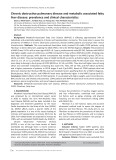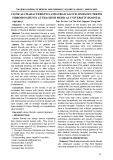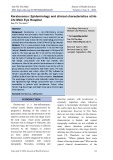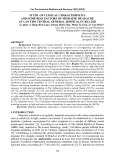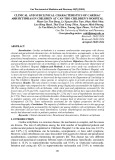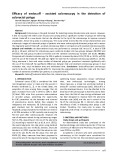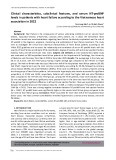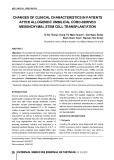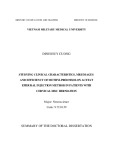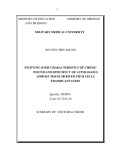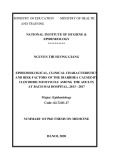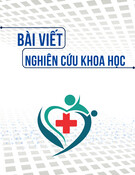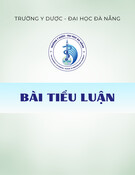
The National Institutes of Health Stroke Scale (NIHSS) is a
tool used by healthcare providers to objectively quantify the
impairment caused by a stroke. The NIHSS is composed of 11 items,
each of which scores a specific ability between a 0 and 4. For each
item, a score of 0 typically indicates normal function in that specific
ability, while a higher score is indicative of some level of
impairment. The individual scores from each item are summed in
order to calculate a patient's total NIHSS score. The maximum
possible score is 42, with the minimum score being 0.
1.1.2. Clinical diagnosis of the location of acute ischemic stroke
due to large vessel of the anterior cerebral artery system
The cortical signs such as aphasia and neglect are sensitive
indicators for large vessel occlusion (LVO) stroke.
Middle cerebral artery (MCA) occlusion stroke had signs:
aphasia, neglect, motor deficits, loss of sensation in any part of the
body and Conjugate Eye Deviation (CED -prévost's sign).
Internal carotid artery (ICA) occlusion stroke, there are
manifestations of MCA occlusion stroke signs and anterior cerebral
artery (ACA) occlusion stroke signs.
1.1.3. Computerized tomography diagnosis of acute ischemic stroke
Non-contrast computed tomography (NCCT) remains a widely
used imaging technique and plays an important role in the evaluation
of patients with acute ischaemic stroke. NCCT had helped identify
early ischemic changes signs include changes in brain parenchyma
that reflect either decreased attenuation (eg, loss of definition of the
lentiform nucleus) or tissue swelling (eg, hemispheric sulcal
effacement, effacement of the lateral ventricle). Systematic
approaches to recognition of early ischemic changes such as the
Alberta Stroke Program Early CT Score (ASPECTS) system improve
the detection of early ischemic changes.
Computed tomography angiography (CTA) uses an injection
of contrast material into your blood vessels and CT scanning to help
diagnose and evaluate blood vessel disease or related conditions,







